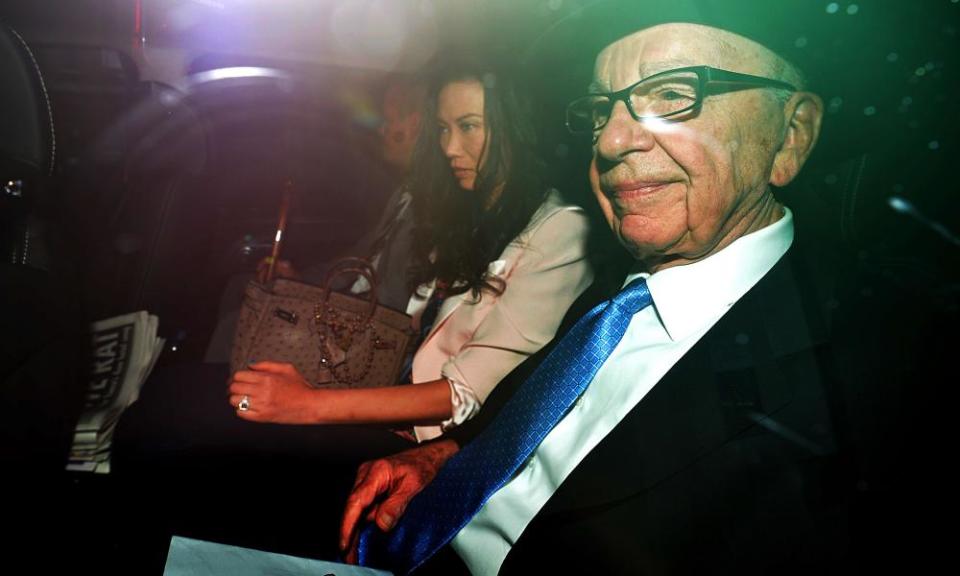News and How to Use It by Alan Rusbridger review – an insider's appeal to sceptics

“Mummy, what is that man for?” was the question famously asked by a young girl at a rally addressed (at great length) by Gladstone. An analogous question occurred to me as I opened this book by the former editor-in-chief of the Guardian: what is this book for? Also: what is it, exactly?
The title suggests that it’s a user’s guide to news. But, in fact, it’s nothing like that. Instead, it’s a compendium of jottings and mini-essays organised alphabetically from A (for Accuracy) to Z (Zoomers). The motivation for writing it was Alan Rusbridger’s concern at the decline in trust in news organisations during the pandemic. Four years on from being full-time in the newsroom, he writes, he wanted to bring “an insider’s perspective to the business of journalism, but also to look at it from the outside. [Rusbridger is now head of an Oxford college.] How can we explain ‘journalism’ to people who are by and large sceptical – which is broadly what most of us would want our fellow citizens to be?”
Given that Rusbridger is, in my opinion, one of the two great newspaper editors of the past half-century (the other is the late Harry Evans), anything he writes about the press is going to be worth reading. His aim, he says, is to explore some of the things about journalism that might help readers to decide whether it deserves their trust.
The question, then, is: has he succeeded?
And the answer? “Up to a point, Lord Copper”, to use that timeless quote from Scoop, Evelyn Waugh’s savage demolition job on our trade. Journalism is not – indeed, in a free society cannot be – a “profession”. And, in Britain at least, it is best described as a very rough trade that rides on the back of a fiercely competitive industry. Given that, any assessment of its trustworthiness has to come up with a mixed answer.
Which is what Rusbridger’s “subjective and a bit random” (his words) approach provides. The truth about such a chaotic and messy business has to reflect the complex and confusing reality. So maybe his alphabetical approach makes pragmatic sense: it enables him to riff on stuff he feels to be important and gloss over things that are more ephemeral. And the structure really means that this is not a book to be read end-to-end, but, rather, one to be dipped into as time and curiosity permits.
He is frank about the 'omertà' code within the British media which ensures that dog generally does not eat dog
Many of the mini-essays are useful distillations of his experience in, and knowledge of, the industry. He is very good on the climate crisis, investigative journalism (not surprisingly, given the sterling work the Guardian did on his watch), the dangers of being driven by metrics, how to deal with the inevitability of mistakes, national security and who (or what) is a “journalist” nowadays. He is frank about the “omertà” code within the British media which ensures that dog generally does not eat dog, but more forgiving than he should be about the way virtually every other media outlet in Britain studiously avoided mentioning the Guardian’s investigation of phone hacking until it became impossible to ignore.
Rusbridger is also perceptive on hyperlinks and the mysterious reluctance of some prestigious news organisations to use them – even today. Uniquely among established journalists, he takes seriously the work of Noam Chomsky and Edward Herman on “manufacturing consent” – in other words, the political economy of mainstream media. He has a surprisingly tolerant mini-essay on newspaper proprietors, the ruthless, corrupt and sometimes unhinged billionaires who have owned and exploited British newspapers over the decades: a rogues’ gallery from which the Canadian Roy Thomson was the exception who proved the rule.
It was nice to see his take on “craft” and, in particular, on Nick Tomalin, a gifted journalist who was tragically killed by a missile during the Yom Kippur war, and who is famous for his succinct list of the requirements for success in the trade – “ratlike cunning, a plausible manner, and a little literary ability”. Rusbridger goes on to list the other requirements that Tomalin cited but which never made the dictionaries of quotations. They included a knack with trains and petty officials, a good digestion and a steady head, well-placed relatives, good luck, an implacable hatred of spokesmen, administrators, lawyers, PR men and “the strength of character to lead a disrupted life without going absolutely haywire”.
Given that an A-Z survey is declaredly subjective, there are still some omissions that strike at least this reviewer. The main one is Rusbridger’s surprising tolerance of the astonishing irresponsibility of Britain’s most dominant newspapers: the way they continue to employ moral fools as columnists (Boris Johnson, after all, owed his prominence until recently to his “work” for the Telegraph); their incessant drip-feed of sexism, xenophobia and racism over many decades; their almost total lack of gender and ethnic diversity; their pathological hostility to the NHS and local authorities; and the megaphones they provide for their rightwing proprietors. If Britain is becoming ungovernable it is they, rather than social media, who should bear most of the blame. Just to take an example at random, the Sun’s slandering of Liverpool fans at Hillsborough happened when Mark Zuckerberg was four. The Facebook founder has made a good start on undermining democracy around the world. But compared with Rupert Murdoch, he’s just an amateur.
•John Naughton is director of the Press Fellowship Programme at Wolfson College, Cambridge
• News and How to Use It: What to Believe in a Fake News World by Alan Rusbridger is published by Canongate (£18.99). To order a copy go to guardianbookshop.com. Delivery charges may apply

